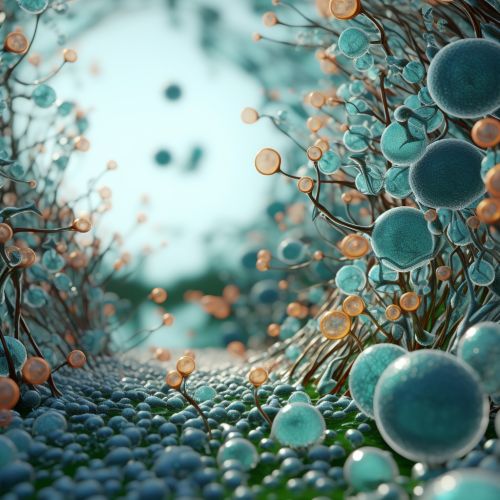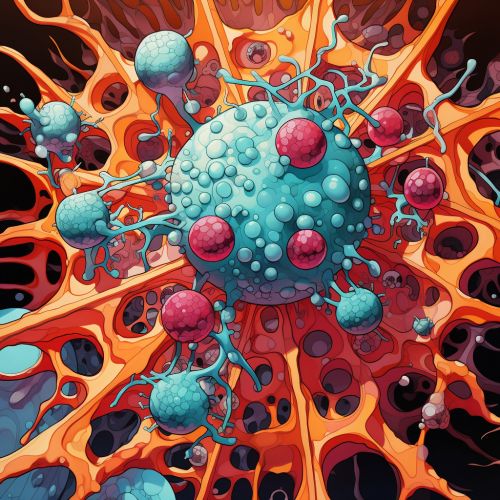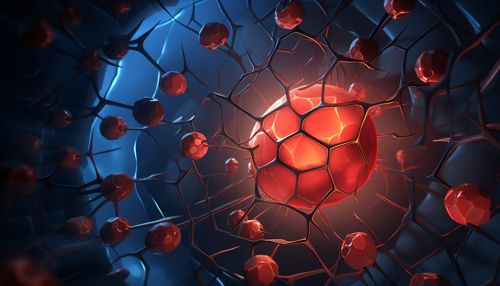The Chemistry of Reactive Oxygen Species in Cellular Signaling
Introduction
Reactive oxygen species (ROS) are chemically reactive molecules containing oxygen. These species are formed as natural byproducts of the normal metabolism of oxygen and have important roles in cell signaling and homeostasis. However, during times of environmental stress, ROS levels can increase dramatically, which can result in significant damage to cell structures. This phenomenon is known as oxidative stress.


Reactive Oxygen Species (ROS)
Reactive oxygen species (ROS) are small oxygen-containing molecules that can easily react with other molecules in a cell. Examples of ROS include peroxides, superoxide, hydroxyl radical, and singlet oxygen. They are generally very small molecules and are highly reactive due to the presence of unpaired valence shell electrons.
ROS are produced as a byproduct of normal cellular metabolism, particularly the mitochondrial electron transport chain. ROS also have important roles in cell signaling and homeostasis. However, during times of environmental stress, ROS levels can increase dramatically, which can result in significant damage to cell structures. This phenomenon is known as oxidative stress.
ROS in Cellular Signaling
Reactive oxygen species play a crucial role in cellular signaling, a process that enables cells to perceive and correctly respond to their microenvironment. ROS are involved in the regulation of a variety of biological responses, ranging from the control of cell growth and differentiation, to the regulation of cell death.
The role of ROS in cellular signaling is complex and multifaceted. They can act as secondary messengers in intracellular signaling cascades, which amplify the signal from a receptor ligand interaction, resulting in a cellular response. ROS can also directly modulate (activate or inhibit) the activity of proteins through the oxidation of certain amino acid residues.
ROS can also influence cellular signaling through their ability to regulate gene expression. This can occur through direct interactions with transcription factors, or by influencing the activity of enzymes that modify DNA and histones, thereby affecting the structure of the chromatin and the accessibility of genes.
Oxidative Stress and Cellular Damage
When ROS production exceeds the cell's antioxidant defenses, the result is oxidative stress. This can lead to various forms of cellular damage, including damage to proteins, lipids, and DNA. Such damage can disrupt normal cellular function and even lead to cell death.


Oxidative stress is implicated in a variety of disease states, including cancer, neurodegenerative diseases, heart disease, and aging. In these contexts, ROS can act as a double-edged sword. On one hand, they can contribute to disease progression by causing cellular damage. On the other hand, they can also act as signaling molecules that trigger cellular responses to stress, including the activation of antioxidant defenses and repair mechanisms.
ROS and Antioxidant Defenses
Cells have evolved a variety of antioxidant defenses to protect against ROS-induced damage. These include enzymatic defenses, such as superoxide dismutase, catalase, and glutathione peroxidase, as well as non-enzymatic defenses, such as vitamins C and E, and glutathione.
These defenses work in concert to neutralize ROS, repair oxidative damage, and maintain redox homeostasis. However, when the balance between ROS production and antioxidant defenses is disrupted, oxidative stress can occur, leading to cellular damage and disease.
Conclusion
In conclusion, reactive oxygen species play a crucial role in cellular signaling and homeostasis. However, when their production exceeds the cell's antioxidant defenses, the result is oxidative stress, which can lead to cellular damage and disease. Understanding the complex roles of ROS in cellular signaling and disease is a key area of ongoing research.
